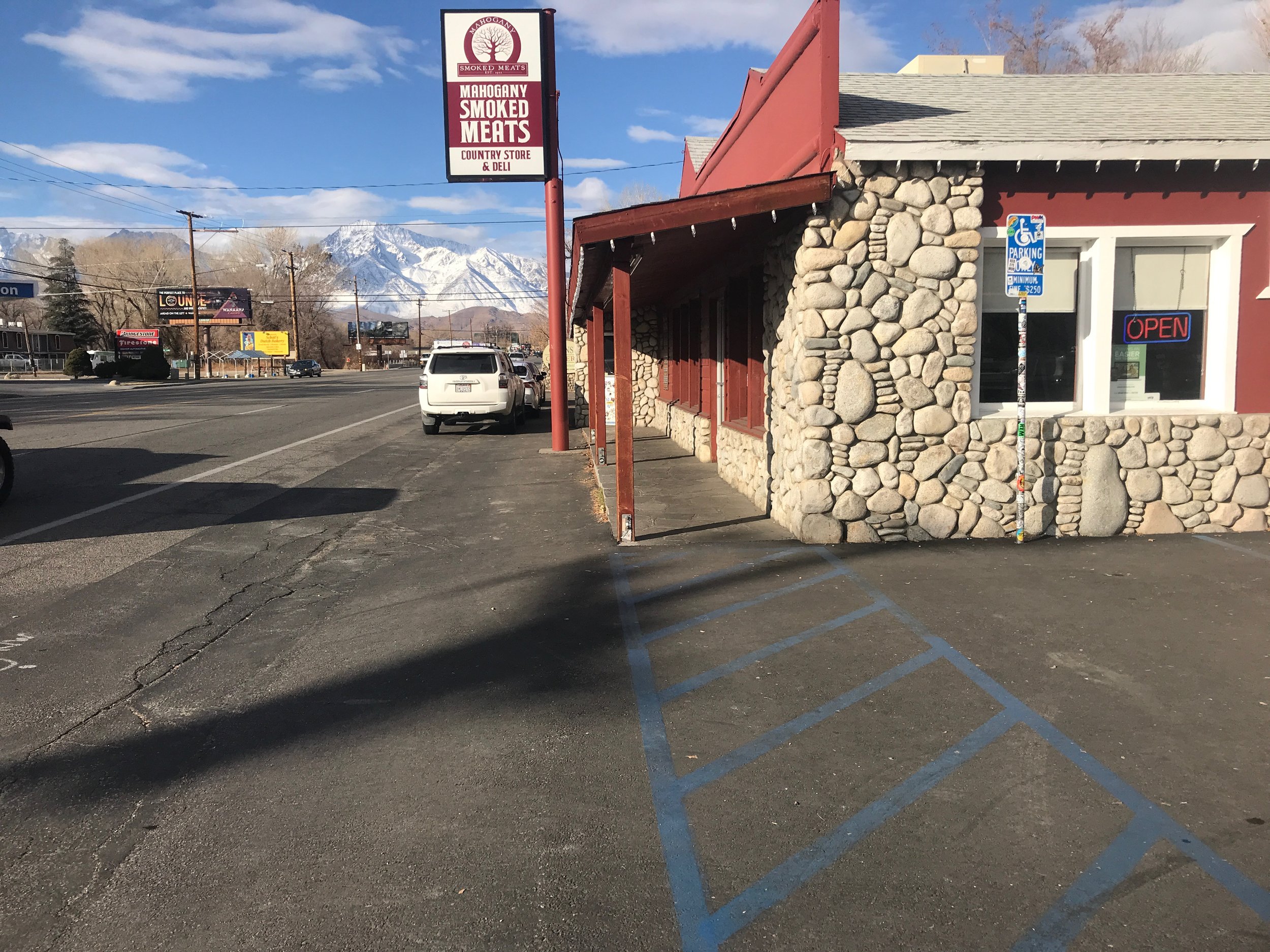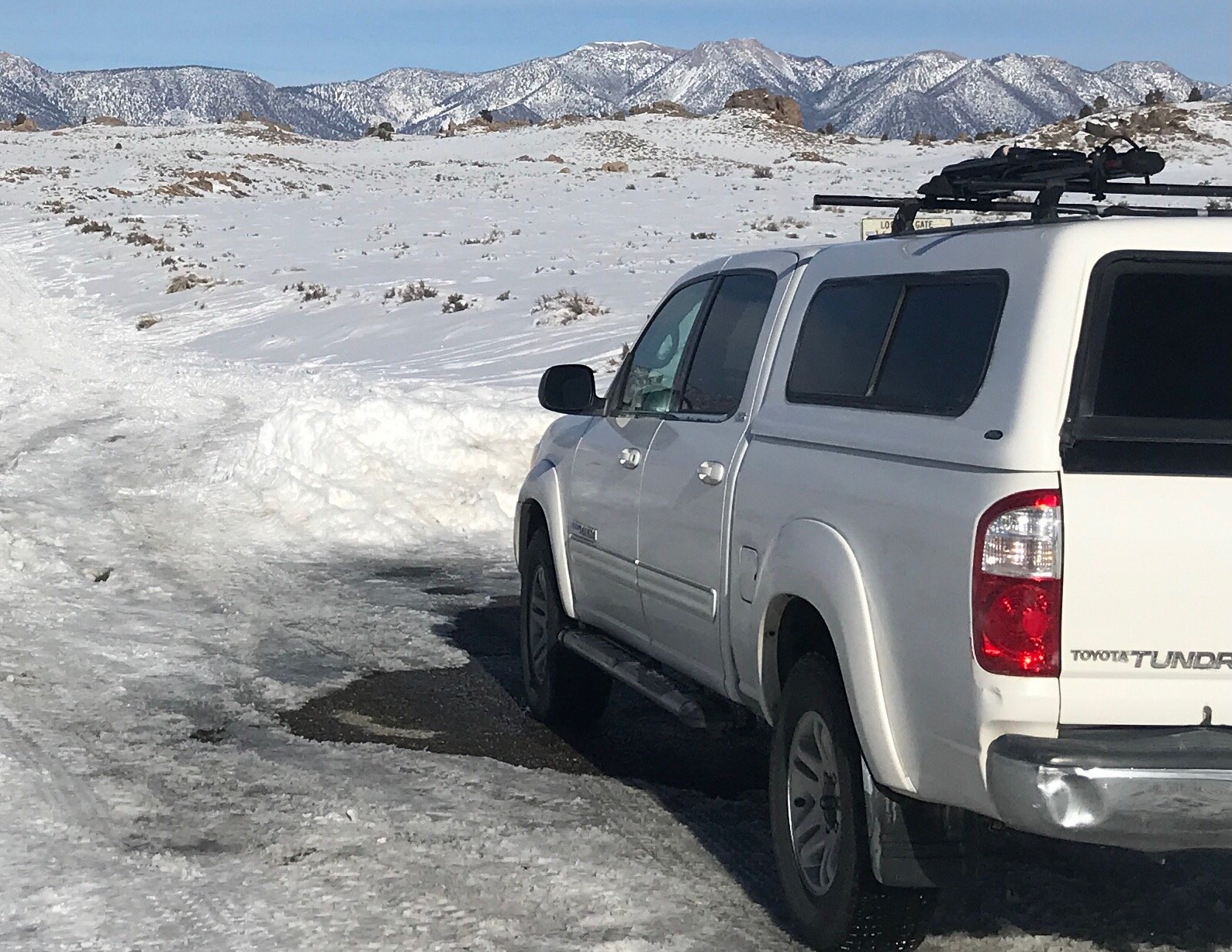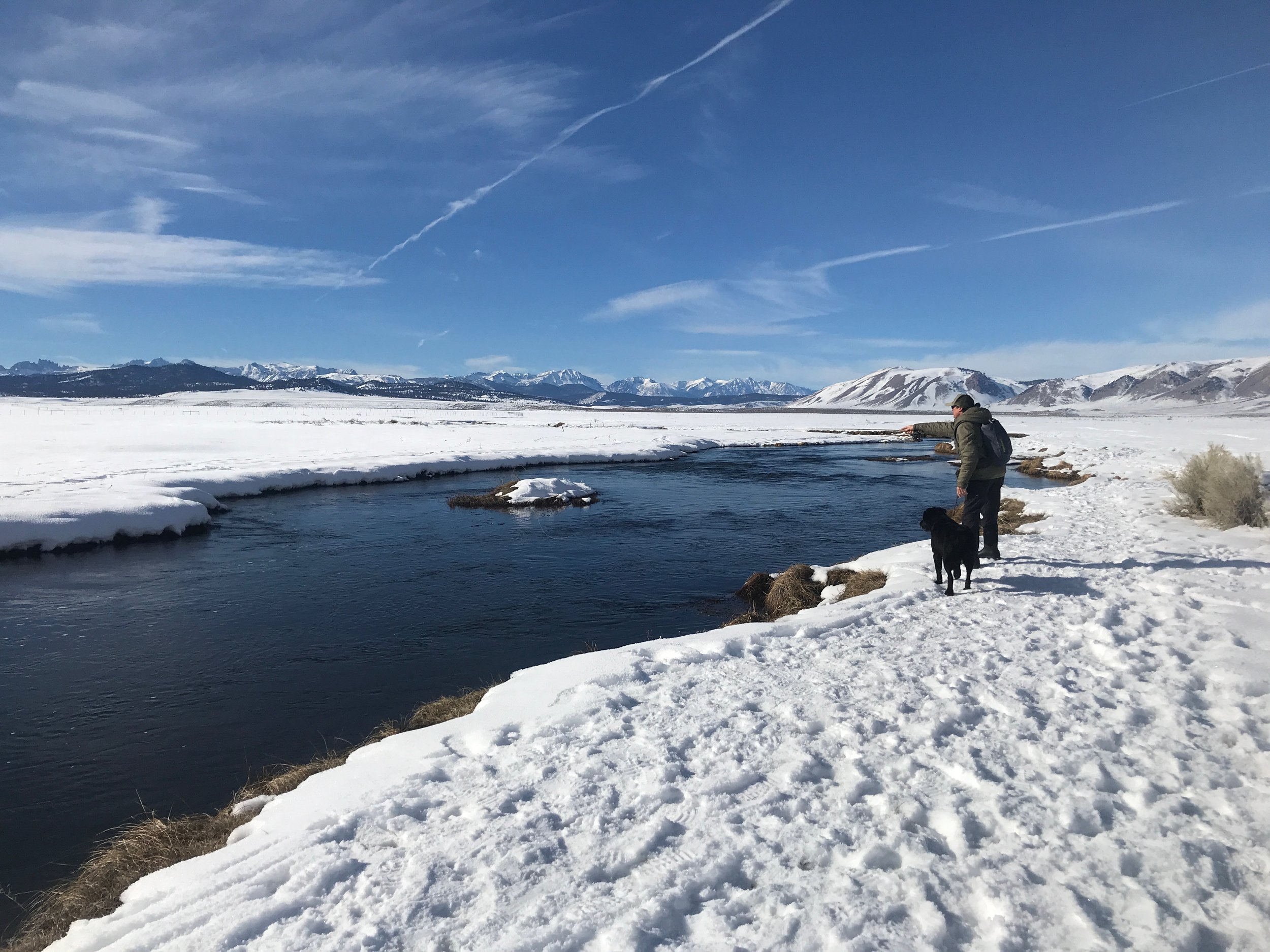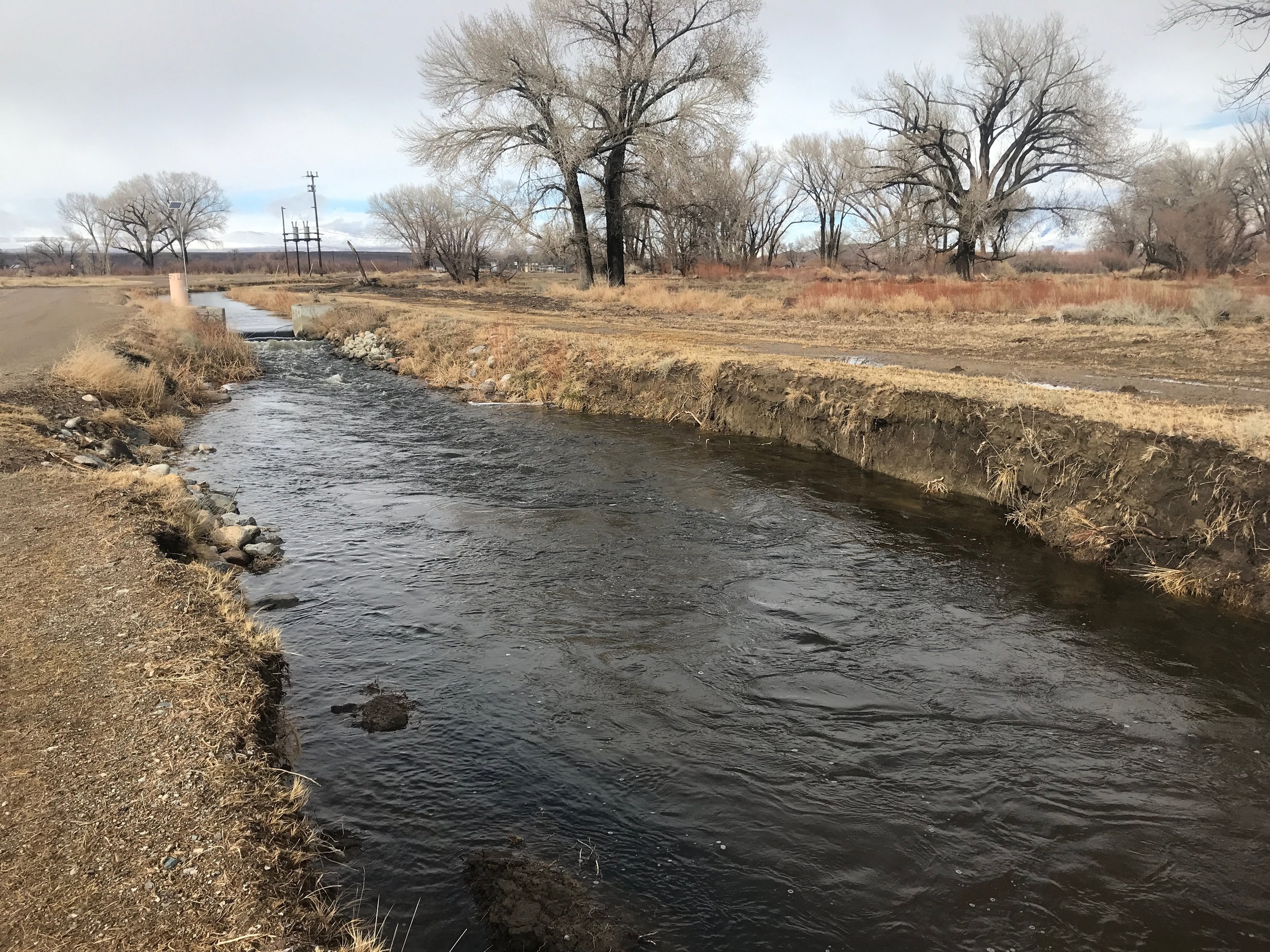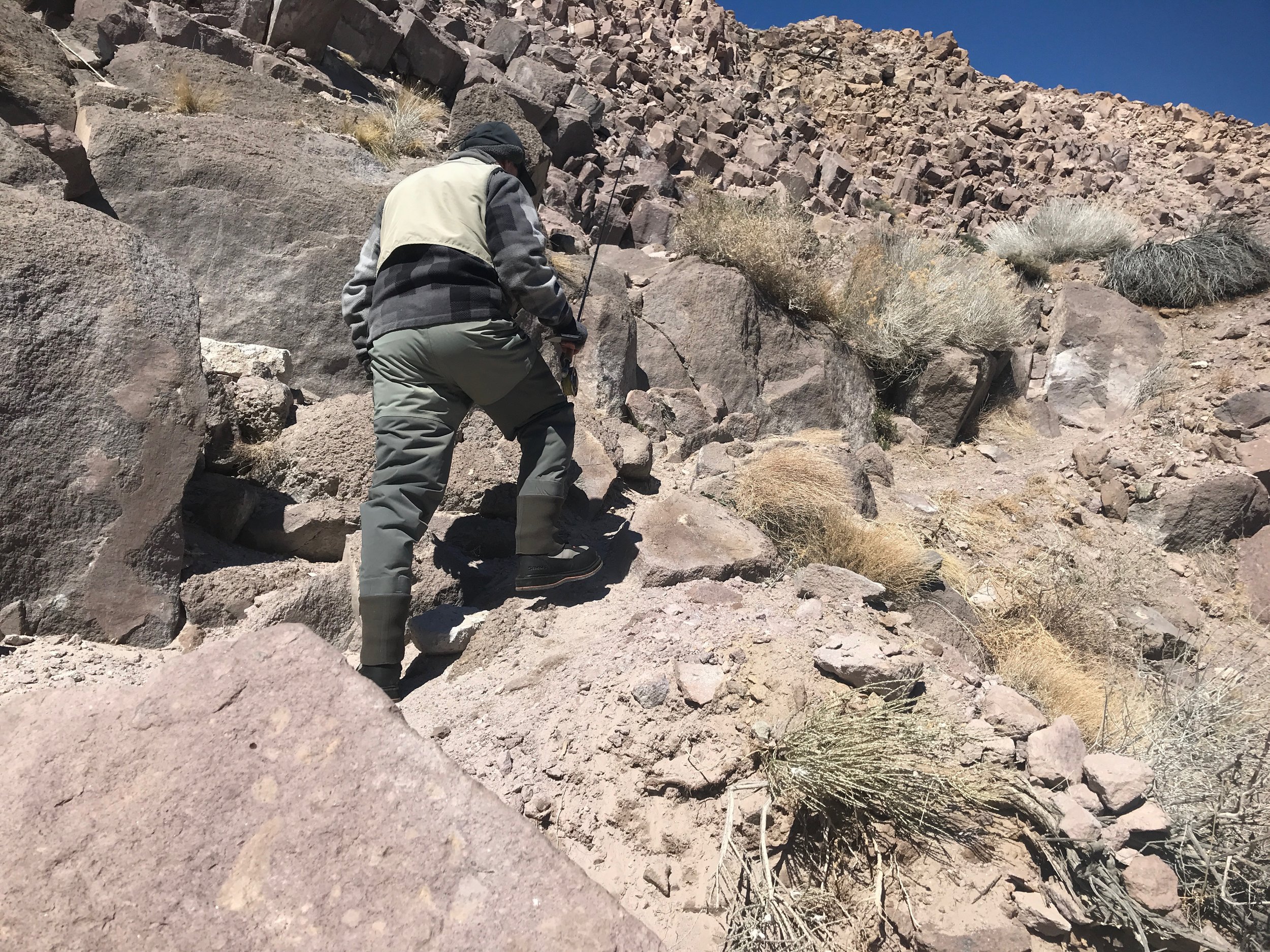Another snow storm blew through the Eastern Sierra leaving up to 24 inches of new snow at the highest elevations. This big snow pack means we will have full lakes and streams will be running strong through the summer and into the fall. Runoff will take place in June and July, depending on spring temperatures. Plan your Eastern Sierra fly fishing trips with this in mind. Los Angeles Department of Water and Power is starting to make room for the spring runoff by lowering Crowley Lake. This means the lower Owens River flows are going up and when flows exceed 300 CFS, fly fishers will not be able to wade.
Every Tuesday from 9-11 a.m. join me for Tuesday Talks at Mahogany Smoked Meats.
Lower Owens River
Wild Trout Section:
Flows in the lower Owens River are at 200 CFS and expected to go up in the next week or two to 300 CFS. At these flows I will not guide wading clients in the river. We will be limited to fly fishing from the banks in a few spots. The most successful way to fish the river at these flows is with nymphs. The key to successful nymph fishing will be getting your flies on the substrate by having enough split shots, more specifically several BB shots, on the leader or using heavily weighted Euro nymph patterns. Dry fly fishing will be limited to a select number of holes where anglers have access and the trout will be rising.
With flows on the lower Owens going up, it will not be long before fly fishers will be fly fishing from the banks because the flows will be unsafe to wade .
Hot Creek:
Interpretive Site:
Adventurous fly fishers are snowshoeing into Hot Creek. The interpretive site is the easiest spot to access the creek. With little fly fishing pressure the few anglers fishing on Hot Creek are doing well with nymphs. I like to fish my nymphs under a size 16 Adams parachute as my indicator. Eighteen to 24 inches below the Adams I’m running either a midge pattern or a blue wing olive mayfly nymph pattern.
Access to Hot Creek Canyon is parking at the end of the plowed Hot Creek Hatcher Road and snowshoeing into the canyon section.
Hot Creek:
Canyon Section:
The canyon requires a lot more effort to get to. Snowshoes are pretty much a must. Ice is making the trail in and out of the canyon tougher to access. I find nymphing easier in the canyon. I’m fishing tiger midges and zebra midges under an Adams Parachute. I also run a size 18 bead head flash back pheasant tail nymph. These flies have been fooling the wary trout that call the canyon of Hot Creek home. Flows are low and the open holes in and around the weed beds are the best place to work your nymphs.
Fly fishers are developing trails from Benton Crossing Bridge up stream to the confluence of Hot Creek.
Upper Owens River
Above Benton Crossing Bridge:
The trails into the upper Owens River from Benton Crossing Bridge are well established now. Fly fishers are going in on snowmobiles or hiking in with snowshoes. The best sections of the river to fish are about an hour’s hike up from the bridge. It has been cold and fly fishers should be dressed accordingly. It requires planning and lots of effort to access the upper Owens River in the winter time. Trophy trout are in the river and feeding. Fly fishers are landing one to three trophy trout per rod working their flies in the deep holes, runs and cut banks. I like to give the trout a big meal by fishing with size 12 stoner nymphs and size 12 two-tone Prince nymphs in green and gold.
Bishop Creek Canal water flows are increasing as the Los Angeles Department of Water and Power begins to make room in Crowley Lake, shipping water south through the canals.
Bishop Creek Canal:
Behind the Ford Dealer:
As flows in the lower Owens River increase, so will the flows in Bishop Creek Canal. I will be fishing in the canal a lot when the flows in the lower Owens River exceed 300 CFS. I prefer to Euro nymph in the canal. I like to fish with olive quilldigons, stoner nymphs and hot spot pheasant tail nymphs. I find these flies to be my most successful patterns and I tend to fish them all winter long. Fly fishing with midges and bead head flash back pheasant tail nymphs under an indicator is another great method of fly fishing the canal.
Hiking in and out of the gorge looks daunting, but it’s a doable hike.
Owens River Gorge
Upper and Middle Gorge:
As the flows in the lower Owens River increase to the point it is no longer fun or feasible to fly fish, I turn to the gorge as an alternative spot to fly fish. This is a tail water fishery that fishes like an opportunistic freestone creek. I like to fish a dry and dropper in here. My favorite combination is to fish with an Adams parachute or a blue wing olive parachute on top. For the nymphs I like to fish with bead head flash back pheasant tail nymphs or bead head flash back gold ribbed hare’s ears.

